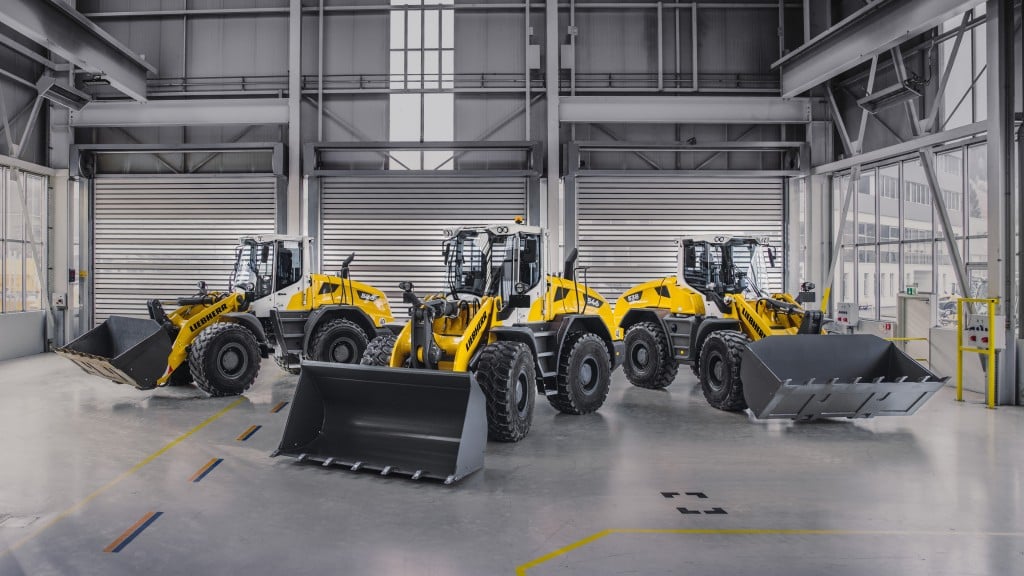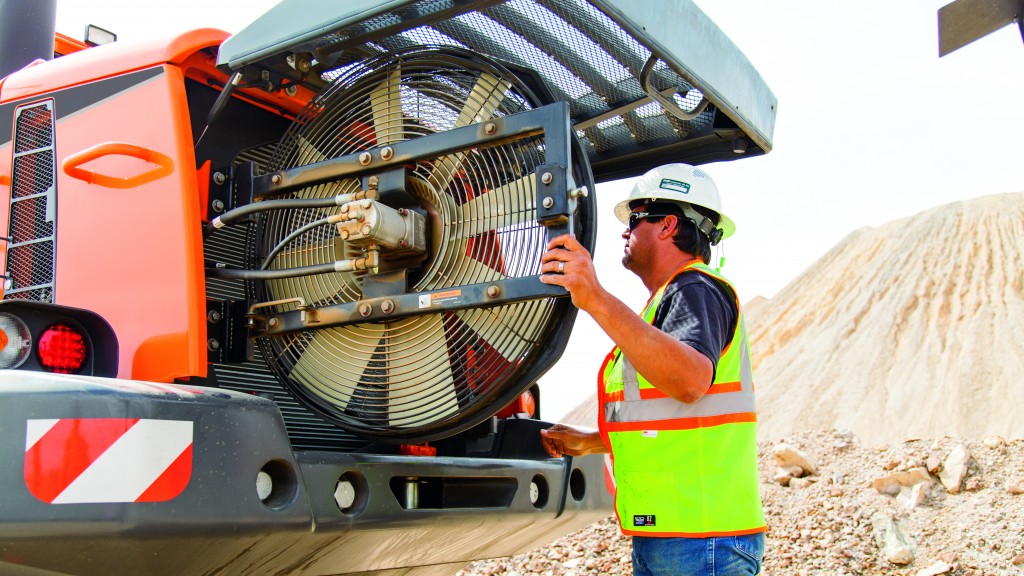New Liebherr wheel loader series features increased engine power over previous generation

Liebherr has redeveloped and revised its range of mid-sized wheel loaders.
The three models, the L 526, L 538, and L 546, have bucket sizes between 2.2 and 3.0 m³ in the standard version and are characterized by a significant increase in performance compared to the previous generation. The new L 526, for example, has around 20 percent more engine power and over 20 percent higher breakout forces than its predecessor.
The newly designed lift arm ensures maximum breakout, holding, and lowering forces. It has optimized z-bar kinematics and improved working hydraulics. Increases in engine power and tipping loads prepare the wheel loaders for demanding operations in various sectors, such as excavation, recycling, and log handling.
The L 538 and L 546 models increase performance in all areas. An optimized travel drive provides increased traction to ensure that the wheel loaders accelerate in everyday work, and can penetrate into all materials.
Newly developed lift arms with optimized z-bar kinematics
Liebherr has reinforced the steel construction of the front section of the new wheel loaders in order to prepare the machines for handling heavy loads. Structural reinforcements on the new lift arms and the cross tube increase durability. The z-bar kinematics with electro-hydraulic pilot controls has larger hydraulic cylinders and more powerful working pumps. The combination of these improvements enables faster cycle times and dynamic and powerful work movements - even with heavy attachments such as high dump buckets or log grapples.
With the increased performance providing a strong basis, Liebherr offers numerous equipment options for the lift arms for industry-specific challenges. High Lift lift arms, for example, are an extended variant of the z-bar kinematics and ensure greater range and efficient loading processes at all heights. For wheel loader applications that regularly require different attachments, there is a view-optimized quick coupler and the fully automatic LIKUFIX quick-coupler system. This allows the machine operator to change between mechanical and hydraulic working tools from the cab quickly and safely at the touch of a button. This saves time and reduces the risk of accidents.
Operators can activate the parallel guidance of the lift arms at the push of a button and work efficiently and safely with forks. The new bucket-tilt assist helps when working with sticky materials, such as damp soil or compost, and ensures accurate loading by shaking out the bucket. In the course of redesigning the lift arms, Liebherr has also revised the bucket design of the new mid-sized wheel loaders. Consequently, customers can now more accurately tailor the individual elements and wear parts of the buckets to their needs at the time of ordering.
Optimized hydrostatic travel drive and intelligent safety features
In addition to the new lift arms, the optimization of the hydrostatic travel drive helps contribute to the increased productivity of the wheel loaders. The new engines are characterized by a higher maximum torque at a lower nominal speed. In this way, performance and efficiency can be increased with the same fuel consumption. More powerful hydraulic components, such as larger travel motors and travel pumps, ensure greater traction in all three models and rapid loading cycles. Liebherr has also reinforced the axles, as well as travel drive components. Depending on the model, all three wheel loaders have larger front or rear axles than their predecessors.
A modern design and intelligent equipment are also part of the overall package of the new mid-sized Liebherr wheel loaders. An example of this is the active personnel detection with brake assistant. This optional assistance system, which is installed at the rear of the wheel loader, warns the machine operator visually on the display and with acoustic signals of dangers in the rear area of the wheel loader. In order to provide a specific warning of imminent injury to persons, the assistance system independently distinguishes between humans and objects using smart sensors. As soon as the active personnel detection emits a warning signal, the brake assistant automatically reduces the speed of the wheel loader to a standstill in order to avoid a potential accident.
Company info
1015 Sutton Drive
Burlington, ON
CA, L7L 5Z8
Website:
liebherr.com/en/can/about-liebherr/liebherr-worldwide/canada/liebherr-in-canada.html



